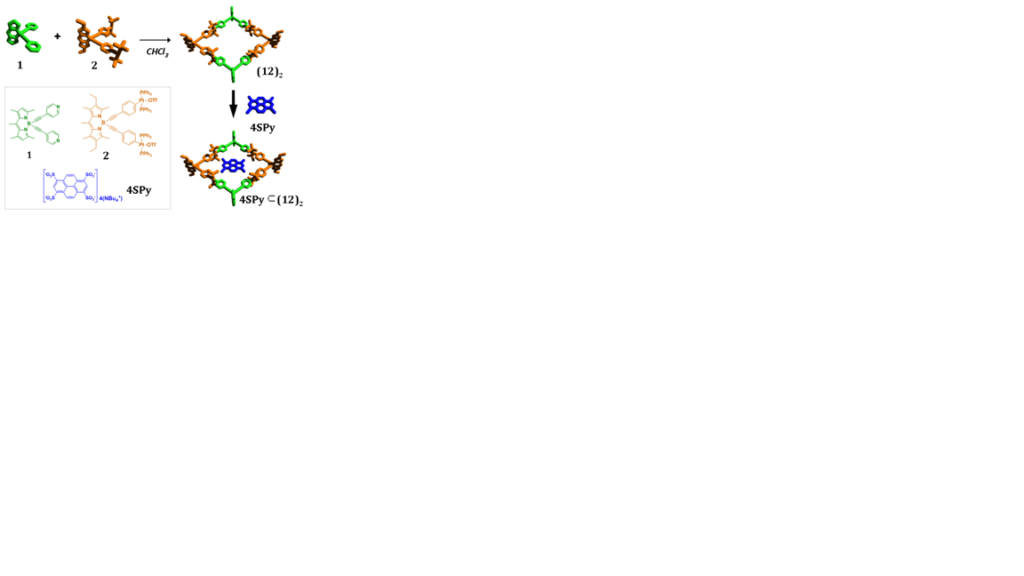Exciton Dynamics in Self-assembled Nanosystems
In this activity we investigate the ultrafast exciton dynamics in self-assembled macrocycles and cages, in which the spatially fixed chromophoric building blocks are precisely separated and suitably aligned one another. For the multi-Bodipy macrocyclic scaffolds shown in Fig. 1, formed via temperature – regulated Pt(II) – pyridyl coordination, the Bodipy subunits are locked at the corners and aligned with their long molecular axis perpendicular to the rigid polygonal frame formed by the alternating B···Pt(II) connectivities. We show that, as opposed to analogous covalent macrocycles, the survival probability of excitons as well as the degree of symmetry distortion and homogeneity in dipoles spacing remain nearly intact as the size of the macrocycle increases from tetragon to hexagon.

The concept of controlling and tuning the emission of light in a host-guest multichromophoric array based on the above host materials has also been demonstrated by our group. More specifically, the coordination-driven synthesis of a rhomboid cavitand composed of two different Bodipys and its inclusion complex with 1,3,6,8- tetrasulfopyrene via ionic interactions (SO3- ••• Pt+2) was established by X-ray crystallography (see Figure right). Highly efficient and unidirectional intra-host and guest-to-host energy transfer was demonstrated by femtosecond fluorescence spectroscopy.

